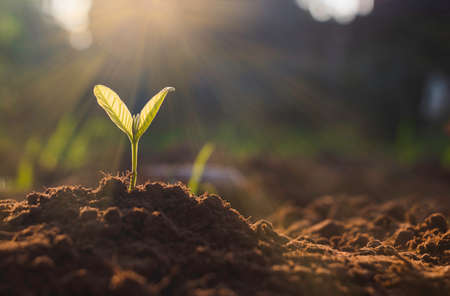Understanding Peat: Why UK Gardeners Are Saying Goodbye
For generations, British gardeners have relied on peat-based compost to nurture their green spaces, from grand allotments to the family window box. Yet, as we dig a little deeper, it becomes clear why there is a gentle but determined shift away from peat in the UK’s gardening community. Peatlands, those mysterious, mossy bogs found across parts of Scotland and Northern Ireland, are not only home to unique plants and wildlife—they also play a crucial role in storing carbon and regulating our climate.
Environmental Impact of Peat Use
When we harvest peat for our gardens, we’re not just taking home a bag of compost; we’re releasing centuries’ worth of stored carbon into the atmosphere. This contributes significantly to greenhouse gas emissions and threatens habitats for rare birds, insects, and plants. The loss of peatlands can feel far removed from the comfort of our own back gardens, but every handful counts towards global climate health.
Recent UK Regulations
Recognising this impact, the UK government has introduced regulations to phase out the sale of peat-based compost to amateur gardeners by 2024. These measures reflect growing awareness among both policymakers and families that protecting peatlands is essential for future generations. Garden centres across England, Scotland, Wales, and Northern Ireland are now offering more sustainable options—making it easier than ever for families to make earth-friendly choices together.
Time for Families and Communities to Embrace Change
Choosing peat-free compost isn’t just about ticking an eco-friendly box; it’s about nurturing a love for nature in children and strengthening bonds within our communities. Whether you’re planting sunflowers on a school plot or tending strawberries with your little ones at home, switching to peat-free alternatives sets a powerful example. Together, UK families can help restore precious wild places while cultivating thriving gardens—one spadeful at a time.
2. What Is Peat-Free Compost? Roots, Ingredients, and Growth
Peat-free compost is more than just a trend—its a thoughtful response to the environmental impact of traditional peat-based products. As UK gardeners, we’re becoming increasingly mindful of where our soil comes from and how it affects the world around us. But what exactly makes up peat-free compost, and why is it such a positive step for our cherished gardens?
The Building Blocks: Sustainable Ingredients
Unlike conventional composts that rely heavily on peat harvested from precious bogs, peat-free alternatives draw upon a variety of renewable resources. These materials not only reduce the strain on natural peatlands but also nourish your plants with rich organic matter. Here’s a handy table showing some common ingredients and their benefits:
| Ingredient | Source | Benefits for Gardens |
|---|---|---|
| Coconut Coir | Coconut husks (by-product) | Excellent water retention; sustainable and renewable |
| Composted Bark | Forest industry by-products | Adds structure; improves aeration; slow to break down |
| Green Compost | Recycled garden waste | Nutrient-rich; supports healthy root systems; diverts waste from landfill |
| Wood Fibre | Sustainably managed timber | Improves drainage; lightweight; reduces compaction |
| Wool & Bracken Mixes | Biodiverse moorland management by-products | Slow-release nutrients; boosts water retention naturally |
Nurturing Growth: How Alternatives Support British Gardens
These innovative blends create an environment where roots can thrive—retaining moisture during dry spells, providing essential nutrients throughout the growing season, and promoting robust plant health. Because these ingredients are chosen for their sustainability, using them helps preserve the UKs unique peat bog habitats—a win-win for gardeners and wildlife alike.
The Takeaway for Family Gardeners
Whether you’re potting up cheerful geraniums with your children or tending to veg in your allotment, peat-free compost offers peace of mind. You’re nurturing your plants—and teaching young ones about the importance of making kind choices for our planet—all while enjoying a flourishing, vibrant garden right here in Britain.

3. Sustainable Alternatives: From Coir to Composting at Home
In the heart of every British garden, there’s a gentle balance between nurturing plants and caring for the planet. Luckily, UK gardeners now have access to a rich variety of peat-free compost options that are as kind to nature as they are effective in supporting healthy growth.
Coconut Coir: A Gentle Hug for Seedlings
Coconut coir, made from the husks of coconuts, is a popular peat-free choice found in most local garden centres across the UK. Light, fluffy, and excellent at holding moisture, coir offers seedlings and young plants a cosy start. It’s especially loved by families growing veggies or herbs together—children will delight in feeling its soft texture as they help pot up seeds!
Wood Fibre and Bark-Based Blends
Many UK compost brands now offer mixes using sustainable wood fibres or bark chips from managed forests. These blends provide structure and slow-release nutrients—ideal for robust root development. When shopping, look for FSC-certified products, which assure responsible sourcing and give you peace of mind that your garden choices support healthy forests.
Green Waste Compost: Closing the Loop Locally
Several councils and garden centres supply compost made from locally collected green waste. This option recycles prunings, lawn clippings, and leaves from neighbourhood gardens into rich soil food—an inspiring example for children learning about life cycles and community care.
Practical Tips for Home Composting
If your family is keen to get hands-on, starting a home compost heap can be a magical way to connect with nature. Choose a sunny spot and layer kitchen scraps (like vegetable peelings) with dry materials (such as autumn leaves or shredded cardboard). Turn the pile regularly—a fun job for little helpers—and watch as worms and insects transform waste into crumbly compost perfect for feeding your flowerbeds or allotment patches. Home composting not only reduces landfill waste but also creates a living classroom where children can witness nature’s recycling in action.
A Family-Friendly Approach to Greener Gardens
By choosing peat-free composts available at your local shop—or embracing homemade compost—you’re teaching your children to nurture both their plants and the world around them. Every handful of peat-free soil is a small act of kindness to Britain’s precious boglands and a practical step towards sustainable gardening that grows with your family.
4. Planting Success: How to Use Peat-Free Compost Across Your Garden
Ready to get your hands dirty and help the planet at the same time? Switching to peat-free compost is more than just a sustainable choice—it’s an adventure in nurturing life, whether you’re starting seeds on a windowsill or filling vibrant hanging baskets. Here’s a step-by-step guide that UK gardeners of all ages can follow, ensuring every little green shoot in your garden gets the best start possible.
Step 1: Choosing the Right Peat-Free Compost
Not all peat-free composts are created equal. Choose one tailored for your specific gardening needs, such as seed sowing, potting on, or soil conditioning. Look out for trusted British brands or those certified by the RHS or Soil Association.
| Compost Type | Best Use | Top Tip |
|---|---|---|
| Seed Sowing Mix | Sowing seeds and young seedlings | Fine texture helps tiny roots grow strong |
| Multipurpose Compost | General planting, containers, hanging baskets | Add slow-release fertiliser for hungrier plants |
| Soil Conditioner | Improving beds and borders | Mix into soil to boost structure and nutrients |
Step 2: Sowing Seeds and Raising Seedlings
Sow with care: Fill trays or pots with seed sowing mix, tap gently to settle (no need to compact), and sow seeds according to packet instructions. Water lightly—imagine giving seedlings a gentle morning dew rather than a heavy downpour! Place trays in a warm spot with good light.
Curious fact for little gardeners:
Did you know? Most UK wildflowers love a low-nutrient start, so peat-free compost is just their cup of tea!
Step 3: Potting On and Transplanting
Nurture growth: When seedlings have two true leaves, carefully transplant them into small pots filled with multipurpose peat-free compost. Handle them gently—think of it as tucking them into a cosy new bed. Water thoroughly after transplanting.
Step 4: Containers and Hanging Baskets
Create cheerful displays: Line containers or baskets with moss (or recycled wool if you’re feeling crafty), then fill with multipurpose compost. Arrange your plants thoughtfully—tall ones in the centre, trailing around the edge. Water well and feed with liquid fertiliser every fortnight during the growing season.
Budding Botanist’s Challenge:
Try mixing different textures and colours for a basket that’ll make even the bees jealous!
Step 5: Improving Beds and Borders
A helping hand for heavy soil: In autumn or spring, spread a generous layer of peat-free soil conditioner over beds and borders—about 5cm thick. Let worms and rain do the hard work, or dig it in gently for an instant boost.
Troubleshooting Tips:
- If water runs off the surface, break up clumps before use.
- If plants look hungry, supplement with organic feeds—peat-free mixes sometimes have fewer nutrients than traditional composts.
- Monitor moisture: peat-free compost dries out quicker in hot spells, so check regularly (perfect job for little hands!).
This nurturing approach not only gives every plant its best chance but also sparks curiosity in young gardeners—because every handful of peat-free compost holds the promise of something new to discover together.
5. Stories from the Allotment: UK Gardeners Share Their Peat-Free Journey
Planting New Traditions Together
Across the UK, families and gardeners are gathering their trowels and planting seeds of change by switching to peat-free compost. Their stories, rooted in curiosity and care for the environment, blossom into a patchwork of hope and encouragement for us all. Let’s dig into these heartfelt journeys that show how even small steps can grow into lasting traditions.
The Green-Fingered Family from Manchester
The Taylor family decided to swap out peat-based compost after learning about its environmental impact at school pick-up one day. “We wanted our children to understand that what we put in our garden matters,” says mum Claire. The kids soon became ‘compost detectives’, exploring local garden centres for peat-free options and marvelling at the worms wriggling through their homemade mix. “Our tomatoes were just as juicy, and there was such pride in knowing we’d made a difference together.”
An Allotment Plot with Purpose in Bristol
Retired teacher Bill found his passion for gardening rekindled by the challenge of going peat-free on his cherished allotment. He admits it took a few tries to perfect his own blend of coir, leaf mould, and well-rotted manure, but the results have been worth every muddy handprint. “The community here shares tips over a cuppa—everyone’s learning together.” Bill now hosts mini-workshops for other plot holders eager to grow more sustainably.
School Gardens Sprout Inspiration in Kent
A primary school in Kent transformed its gardening club by adopting peat-free compost across all projects. Headteacher Mrs Patel beams, “Our pupils are thrilled to see wildlife thriving and know their actions protect precious habitats.” The children take home stories of their sunflowers and beans, inspiring neighbours and grandparents alike to try peat-free growing at home.
Cultivating a Movement, One Story at a Time
These tales remind us that every pot planted without peat is a small act of hope for the future. From city balconies to village allotments, UK gardeners are proving that sustainable choices can be joyful—and deeply rewarding. So why not root your own family’s story in the soil of change? The journey may be muddy, but it’s full of discovery and connection along the way.
6. Nurturing the Next Generation: Teaching Children About Sustainable Gardening
Planting Seeds of Curiosity and Care
Introducing children to peat-free gardening is a wonderful way to spark their curiosity about the natural world while planting the seeds of sustainability. Instead of simply telling children why peat-free compost matters, let them dig their own hands into the earth, feel the crumbly texture of peat-free mixes, and marvel as tiny seedlings push through the soil. Start with simple projects like cress heads or sunflower pots on your windowsill—these small victories can ignite a lifelong passion for plants and caring for our planet.
Interactive Learning Through Biodiversity
British gardens are bursting with local biodiversity, from wriggling earthworms to fluttering butterflies. Encourage your little ones to become nature detectives: go on mini-safaris in your garden, observing which insects visit their pea shoots or how many birds flock to their bug hotel made from twigs and pinecones. Each discovery can be a conversation about how peat-free compost helps preserve natural habitats, especially our precious UK peatlands and their wildlife.
Creative Activities for Green-Fingered Families
There’s no need for grand gestures—simple, creative activities can turn everyday gardening into magical moments. Try painting plant markers together using pebbles or recycled lolly sticks. Create a “compost diary” where children record what scraps go into the compost bin, watch it decompose, and then use it to nourish new plants. You might even start a family tradition: a yearly competition for the tallest tomato plant grown in peat-free soil!
Fostering Lasting Connections with Nature
Above all, sustainable gardening is about nurturing relationships—with each other and with the land beneath our feet. By growing flowers, herbs, and vegetables together using peat-free compost, you’re not just cultivating plants; you’re cultivating empathy, responsibility, and wonder in your children. Every muddy handprint and joyful harvest helps ensure that the next generation of UK gardeners will cherish and protect our green spaces long into the future.


